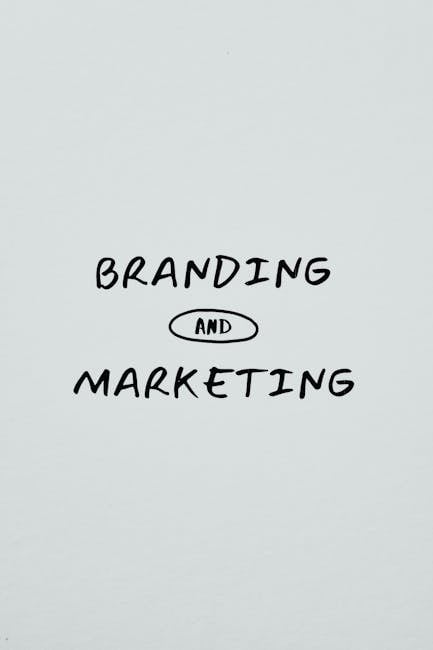Content Marketing for Lead Generation: Proven Tactics
Effective lead generation through content marketing hinges on a foundational understanding of the buyer’s journey and meticulous audience segmentation. At its core, lead generation is the process of attracting and converting strangers and prospects into leads, typically individuals who have indicated interest in a company’s product or service. This interest is often expressed by sharing contact information, like an email address, in exchange for valuable content. Content marketing, then, serves as the engine of this process, providing the magnet that draws potential customers in and the fuel that nurtures them through the various stages of the sales funnel. It’s about delivering relevant, valuable, and consistent content to attract and retain a clearly defined audience—and, ultimately, to drive profitable customer action.
The journey from a casual browser to a committed customer is rarely linear and involves multiple touchpoints. Content marketing strategically addresses each stage:
- Awareness Stage (ToFu – Top of Funnel): Prospects are experiencing a problem or opportunity and are searching for information. Content here is broad, educational, and problem-agnostic. It aims to attract a wide audience and introduce the brand as a helpful resource.
- Consideration Stage (MoFu – Middle of Funnel): Prospects have clearly defined their problem or opportunity and are now researching possible solutions. Content at this stage educates them on different methodologies or approaches, subtly positioning the company’s offering as a viable solution.
- Decision Stage (BoFu – Bottom of Funnel): Prospects have decided on a solution strategy and are now evaluating specific vendors or products. Content here directly showcases the company’s unique value proposition, builds trust, and encourages conversion.
Differentiating lead types is crucial for effective nurturing. A Marketing Qualified Lead (MQL) is a prospect who has engaged with marketing content and exhibited behaviors indicating they are more likely to become a customer than other leads. Examples include downloading a gated whitepaper, attending a webinar, or repeatedly visiting specific product pages. An Sales Qualified Lead (SQL), on the other hand, is an MQL that has been vetted by the sales team and deemed ready for direct sales engagement. They often have an immediate need, the budget, and decision-making authority. Understanding these distinctions allows for tailored content delivery and ensures that sales teams focus their efforts on the most promising prospects.
1. Strategic Content Audit and Persona Development
Before any content creation begins, a thorough content audit is paramount. This involves systematically reviewing all existing content assets to assess their performance, identify gaps, and understand what resonates with the target audience. The audit should evaluate:
- Performance Metrics: Traffic, engagement (time on page, bounce rate), conversion rates, social shares, backlinks.
- SEO Effectiveness: Keyword rankings, organic visibility, search intent alignment.
- Content Freshness and Accuracy: Is the information up-to-date? Does it reflect current industry trends or product features?
- Audience Alignment: Does the content speak to the buyer personas? Is the tone consistent?
- Conversion Pathways: Does the content effectively guide users towards a desired action (e.g., subscribing, downloading, contacting sales)?
- Content Gaps: What topics are missing that your audience is searching for? Are there specific stages of the buyer’s journey that lack adequate content?
The insights from a content audit inform future strategy, highlighting what to repurpose, update, archive, or create anew. It prevents redundant effort and ensures content investments are directed towards high-impact areas.
Simultaneously, the bedrock of successful content marketing for lead generation is meticulous buyer persona development. A buyer persona is a semi-fictional representation of your ideal customer based on market research and real data about your existing customers. It goes beyond demographics, delving into psychographics:
- Demographics: Age, gender, income, location, job title, industry.
- Psychographics: Goals, motivations, challenges, pain points, interests, values.
- Behavioral Patterns: How do they research solutions? What social media platforms do they use? What content formats do they prefer?
- Objections: What potential hurdles or concerns might they have when considering your solution?
- Key Influencers: Who do they trust for information or recommendations?
Creating detailed personas (typically 3-5 per business) ensures that every piece of content created is specifically tailored to address the needs, questions, and pain points of a particular segment of your audience at a particular stage of their journey. This level of personalization significantly increases the likelihood of engagement and conversion, transforming generic content into a potent lead-generation tool. Each persona should have an associated “journey map” detailing their typical path, their emotional state at each stage, and the information they need to move forward.
2. High-Impact Content Types for Lead Capture
Certain content formats are inherently more effective for lead generation due to their value proposition and potential for gating.
a. Ebooks and Whitepapers:
These are foundational lead magnets, offering in-depth, authoritative content on a specific industry topic, problem, or solution. They demonstrate thought leadership and provide substantial value, justifying the “gate” (requiring an email address for download).
- Tactics: Focus on solving a major pain point, offering comprehensive guides, or presenting proprietary research. Promote them heavily via blog posts, social media, and email nurturing sequences. Ensure compelling landing pages with clear value propositions and concise forms. Title these assets to clearly communicate the value, e.g., “The Definitive Guide to [Problem]” or “[Number] Strategies for [Achieving Goal].”
- SEO: Optimize landing pages for specific long-tail keywords related to the ebook’s topic. Include relevant keywords within the ebook content (where ungated snippets might be available or for internal search).
b. Webinars and Online Workshops:
Live (or pre-recorded) events offer a unique opportunity for real-time engagement and direct interaction. They are excellent for capturing leads due to the registration requirement.
- Tactics: Choose a highly relevant, niche topic that addresses a specific audience challenge. Promote well in advance across all channels. Offer a clear agenda and highlight the key takeaways. During the webinar, provide immense value, answer questions, and include a soft call-to-action (e.g., a special offer for attendees, a link to a resource). Follow up immediately with registrants and attendees via email, providing a recording and additional resources.
- Lead Capture: Registration forms should collect essential information (name, email, company, job title). Consider integrating with CRM for automatic lead tracking and segmentation.
c. Case Studies and Success Stories:
These are powerful bottom-of-funnel content types, providing tangible proof of your solution’s effectiveness. They build trust and credibility by showcasing real-world results.
- Tactics: Focus on quantifiable outcomes (e.g., “Increased sales by 30%,” “Reduced costs by $50,000”). Include customer testimonials, a clear problem statement, the solution provided, and the measurable results. Use compelling visuals like graphs or charts. These can be gated for high-value prospects or used ungated on product/service pages to reinforce value.
- Conversion: Integrate clear CTAs on case study pages, inviting prospects to “Request a Demo” or “Speak to Sales.”
d. Interactive Content (Quizzes, Calculators, Assessments):
These formats are highly engaging, providing personalized value in exchange for lead information. They also offer valuable data about the prospect’s needs and preferences.
- Tactics: Design quizzes that provide immediate, actionable insights related to your product/service. For example, a “Lead Generation Readiness Quiz” or a “ROI Calculator” for your software. Require an email address to receive the results or a personalized report.
- Segmentation: The answers collected can be used to segment leads and tailor future content nurturing sequences.
e. Blog Posts and Articles with Strategic CTAs:
While often awareness-stage content, blog posts are critical for attracting organic traffic. Their lead generation power comes from strategically placed, contextually relevant calls-to-action.
- Tactics: Every blog post should have a clear next step. This could be an in-line CTA for a related ebook, a banner ad for a webinar, a content upgrade (a bonus resource specific to that post’s topic, gated), or an exit-intent pop-up. Ensure CTAs are varied and tailored to the reader’s likely stage in the buyer’s journey based on the blog post’s topic. Optimize for long-tail keywords that indicate informational or problem-solving intent.
- Content Upgrades: Offering a PDF version of the blog post, a checklist, a template, or a supplementary guide in exchange for an email address is highly effective.
f. Video Content (Explainer Videos, Demos, Tutorials):
Video is highly engaging and can convey complex information quickly. It builds rapport and trust.
- Tactics: Embed lead capture forms within videos (e.g., using platforms like Wistia or Vidyard), offer gated video series, or use YouTube descriptions to link to landing pages for related resources. Product demos and explainer videos are particularly effective for consideration and decision-stage leads. Webinars often convert into evergreen video content.
- YouTube SEO: Optimize video titles, descriptions, and tags for relevant keywords to drive organic search traffic to your videos, then convert viewers into leads via CTAs.
3. Powerful Content Distribution and Promotion Strategies
Creating excellent content is only half the battle; getting it in front of the right audience is the other. Effective distribution amplifies content’s lead generation potential.
a. Search Engine Optimization (SEO):
SEO ensures your content is discoverable by people actively searching for solutions.
- Keyword Research (Intent-Based): Go beyond basic keywords. Identify long-tail keywords and questions that indicate specific user intent (informational, navigational, transactional, commercial investigation). Tools like Semrush, Ahrefs, and Google Keyword Planner are indispensable. Focus on topic clusters and pillar pages to establish authority on broader themes.
- On-Page SEO: Optimize titles, meta descriptions, header tags (H1, H2, H3), image alt text, and URL structures with target keywords. Ensure content is comprehensive, well-structured, and provides genuine value, directly answering user queries. Internal linking within your site helps distribute “link juice” and guide users to related content, including lead magnets.
- Technical SEO: Ensure your site is technically sound: fast loading speed, mobile-friendly, secure (HTTPS), proper sitemaps, and no broken links. Google’s Core Web Vitals are increasingly important.
- Off-Page SEO (Backlinks): High-quality backlinks from reputable sites signal authority to search engines. Tactics include guest blogging, broken link building, creating linkable assets (original research, infographics), and outreach to industry influencers. The more relevant and authoritative sites link to your lead-generating content, the higher it will rank.
b. Social Media Marketing (Organic & Paid):
Social platforms offer vast reach and precise targeting capabilities.
- Platform Selection: Choose platforms where your target audience spends their time (LinkedIn for B2B, Instagram/TikTok for visual/younger audiences, Facebook for broad reach, Twitter for real-time news).
- Organic Promotion: Share snippets, compelling visuals, and questions to drive traffic to your gated content. Engage with comments and discussions. Leverage features like LinkedIn Articles, Facebook Groups, or Twitter threads for deeper content sharing.
- Paid Social Ads: Highly effective for lead generation. Use detailed targeting options (demographics, interests, behaviors, job titles) to reach specific buyer personas. Create compelling ad creatives (images, videos, carousels) and strong calls-to-action (e.g., “Download Now,” “Register for Webinar”). A/B test ad copy, visuals, and audience segments. Use lead gen forms native to platforms (e.g., LinkedIn Lead Gen Forms) for frictionless lead capture. Retarget website visitors who didn’t convert.
c. Email Marketing and Nurture Sequences:
Once a lead’s email is captured, email marketing becomes the primary channel for nurturing them down the funnel.
- Segmentation: Segment leads based on their persona, the content they downloaded, their engagement level, and their stage in the buyer’s journey. This allows for highly personalized email campaigns.
- Nurture Workflows: Create automated email sequences designed to educate, build trust, and guide leads towards conversion. For example, a lead downloading an ebook might receive a 3-email sequence: 1) delivering the ebook, 2) offering related blog posts, 3) inviting them to a demo or consultation.
- Personalization: Address leads by name, reference their specific interests or challenges, and recommend relevant content.
- Content Promotion: Use email newsletters to regularly promote new blog posts, webinars, case studies, and other lead magnets.
d. Paid Advertising (PPC & Display):
Google Ads and display networks can drive immediate, targeted traffic to lead-generating landing pages.
- Search Ads (PPC): Bid on keywords that indicate strong commercial intent (e.g., “best CRM software,” “lead generation tools”). Send users to highly optimized landing pages with clear lead capture forms.
- Display Ads: Use retargeting campaigns to show ads to people who have visited your site but haven’t converted. These ads can promote specific lead magnets they might be interested in.
- A/B Testing: Continuously test ad copy, headlines, creatives, and landing page elements to optimize conversion rates.
e. Content Syndication & Repurposing:
Extend the reach of your existing content by distributing it on third-party platforms.
- Guest Posting: Write articles for reputable industry blogs that link back to your lead magnets or pillar pages. This builds authority and drives referral traffic.
- Medium, LinkedIn Articles, Quora: Repost or adapt your blog content on these platforms to reach new audiences. Always include a CTA pointing back to your site for deeper engagement or lead capture.
- Partnerships: Collaborate with complementary businesses or industry influencers to cross-promote content or co-host webinars, leveraging each other’s audiences for lead generation.
- Repurposing: Transform existing content into new formats (e.g., a blog post into an infographic, an ebook chapter into a video series, a webinar into a podcast episode). Each new format offers a fresh avenue for discovery and lead capture.
4. Conversion Rate Optimization (CRO) for Lead Generation
Simply driving traffic to content is insufficient; the focus must shift to converting that traffic into leads. This is where CRO comes in, systematically improving the percentage of website visitors who complete a desired action.
a. Compelling Calls-to-Action (CTAs):
CTAs are the bridge between your content and the lead capture form.
- Clarity and Urgency: Use action-oriented verbs (e.g., “Download Now,” “Register Today,” “Get Your Free Guide”). Create a sense of urgency or exclusivity where appropriate.
- Value Proposition: The CTA copy should reiterate the benefit the user will receive (e.g., “Unlock 5X ROI,” “Master Lead Nurturing”).
- Placement: Strategically place CTAs within blog posts (in-line, after the fold, in a sidebar), on landing pages, within email signatures, and in video descriptions.
- Design: Make CTAs visually prominent. Use contrasting colors, appropriate sizing, and clear button copy.
- A/B Testing: Test different copy, colors, sizes, and placements to identify what performs best.
b. Optimized Landing Pages:
A landing page’s sole purpose is to convert visitors into leads.
- Clear Headline and Sub-headline: Instantly communicate the offer’s value.
- Concise Copy: Focus on benefits, not just features. Use bullet points for easy scanning.
- Compelling Visuals: Images or videos that reinforce the offer.
- Lead Capture Form: Keep it short and ask only for essential information. The fewer fields, the higher the conversion rate (though more fields can yield higher-quality leads).
- Social Proof: Include testimonials, trust badges, security seals, or client logos to build credibility.
- No Distractions: Remove navigation menus, sidebars, and unnecessary links to keep visitors focused on the offer.
- Mobile Responsiveness: Ensure the page loads quickly and looks great on all devices.
c. High-Value Lead Magnets:
The offer itself must be compelling enough to justify giving up personal information.
- Solve a Specific Problem: The lead magnet should directly address a pain point or provide a desired solution for your target persona.
- Perceived Value: It should feel substantial and exclusive, not something easily found elsewhere.
- Actionable: Provide practical advice, templates, checklists, or tools that the prospect can immediately use.
- Relevance: The lead magnet must be highly relevant to your core offerings; it should attract individuals who are genuinely potential customers.
d. Strategic Content Gating:
Deciding what content to gate and when is critical.
- Top-of-Funnel Content: Generally ungated (blog posts, infographics, short videos) to maximize organic reach and build awareness.
- Middle-of-Funnel Content: Typically gated (ebooks, whitepapers, webinars, tools) as they provide deeper value and indicate higher intent.
- Bottom-of-Funnel Content: Can be gated (case studies, free trials, demos) for highly qualified leads, or ungated to encourage immediate conversion for those ready to buy.
- Progressive Profiling: For successive lead magnet downloads, ask for new information rather than repeating previously collected data. This gradually builds a more complete lead profile without overwhelming the user.
e. Marketing Automation and Lead Nurturing:
Automated workflows streamline the nurturing process, ensuring leads receive timely, relevant content.
- Lead Scoring: Assign points to leads based on their actions (e.g., visiting specific pages, downloading content, email opens). Higher scores indicate higher sales readiness.
- Automated Workflows: Set up triggers to send specific emails or move leads to different segments based on their scores or actions. For instance, a lead who downloads a “pricing guide” might be moved to a “high-intent” segment and receive a sequence of emails from sales.
- CRM Integration: Connect your marketing automation platform with your CRM (Customer Relationship Management) system to provide sales with comprehensive lead history and insights.
5. Measurement, Analytics, and Continuous Improvement
Without robust analytics, content marketing efforts for lead generation are shots in the dark. Measuring performance allows for data-driven optimization.
a. Key Performance Indicators (KPIs) for Lead Generation:
- Website Traffic: Overall visitors, organic traffic, referral traffic, direct traffic.
- Engagement Metrics: Time on page, bounce rate, pages per session, scroll depth. These indicate content quality and relevance.
- Lead Capture Rates: Conversion rate of landing pages (submissions/visitors), pop-up conversion rates, content upgrade conversion rates.
- Number of Leads Generated: Total leads, MQLs, SQLs. Track by source (organic, social, paid, referral).
- Lead-to-Customer Conversion Rate: The percentage of leads that eventually become paying customers. This is the ultimate measure of content marketing ROI.
- Cost Per Lead (CPL): Total content marketing spend divided by the number of leads generated.
- Content Performance by Type/Topic: Which content formats and topics generate the most leads? Which content pieces contribute most to conversions downstream?
- Customer Lifetime Value (CLTV): Understand the long-term value generated from leads acquired through content marketing.
b. Analytics Tools:
- Google Analytics (GA4): Essential for tracking website traffic, user behavior, conversions, and identifying top-performing content. Set up clear goals for lead form submissions and content downloads.
- CRM Systems (e.g., Salesforce, HubSpot): Track leads through the sales pipeline, attribute revenue back to content sources, and manage customer relationships.
- Marketing Automation Platforms (e.g., HubSpot, Marketo, Pardot): Monitor email open rates, click-through rates, lead scores, and lead nurturing progress.
- SEO Tools (Semrush, Ahrefs, Moz): Track keyword rankings, organic traffic trends, backlink profiles, and competitor performance.
- Social Media Analytics: Track engagement, reach, and click-throughs from social posts.
c. A/B Testing and Iteration:
Content marketing is an iterative process. Continuous testing is vital for improvement.
- Content Elements: Test different headlines, opening paragraphs, and content structures.
- CTA Variations: Experiment with different CTA copy, colors, sizes, and placements.
- Landing Page Elements: Test form length, headline variations, visual elements, and the presence/absence of social proof.
- Email Subject Lines and Body Copy: Optimize for open rates and click-through rates.
- Ad Creatives and Audiences: Test different ad visuals, copy, and targeting parameters for paid promotions.
- User Feedback: Collect direct feedback through surveys or user testing to understand pain points and preferences.
- Heatmaps and Session Recordings: Tools like Hotjar or Crazy Egg can reveal how users interact with your content and where they drop off.
6. Advanced Strategies for Enhanced Lead Generation
Pushing beyond the fundamentals can yield significant lead generation gains.
a. Account-Based Marketing (ABM) with Content:
ABM flips the traditional funnel, focusing on specific high-value accounts rather than broad lead generation. Content becomes highly personalized.
- Target Account Identification: Work with sales to identify ideal client accounts.
- Deep Research: Understand the specific challenges, goals, and stakeholders within each target account.
- Personalized Content: Create bespoke content tailored to the specific needs of these accounts. This could be a personalized landing page, a customized report, a private webinar, or even a personalized video message. The content directly addresses the nuances of their business and industry.
- Multi-Channel Delivery: Deliver content through highly targeted ads, direct mail, personalized emails, and sales outreach.
- Sales-Content Alignment: Ensure sales and marketing are perfectly aligned on messaging and outreach sequences. Content empowers sales to have highly relevant conversations.
b. AI in Content Marketing for Lead Generation:
Artificial intelligence is transforming content creation and personalization.
- Content Idea Generation: AI tools can analyze search trends, competitor content, and audience questions to suggest high-performing content topics.
- Content Creation Assistance: AI writing tools can help generate outlines, first drafts, headlines, and meta descriptions, speeding up the content creation process.
- Personalization at Scale: AI-powered platforms can dynamically adapt website content, email recommendations, or product suggestions based on individual user behavior and preferences, increasing relevance and conversion.
- Predictive Analytics: AI can analyze lead data to predict which leads are most likely to convert, allowing for more focused sales and marketing efforts.
- Chatbots: AI-powered chatbots on websites can answer common questions, qualify leads, and direct them to relevant content or sales representatives, providing immediate engagement and capture opportunities.
c. Voice Search Optimization:
As voice assistants become more prevalent, optimizing content for voice search is crucial.
- Conversational Keywords: People use natural language when speaking to voice assistants. Focus on optimizing for longer, question-based keywords (e.g., “What is the best content marketing strategy for B2B?”).
- Q&A Format: Structure content with clear headings that answer common questions directly and concisely. Provide direct answers that can be easily pulled by voice assistants.
- Featured Snippets: Aim to rank for featured snippets (Position 0 in Google search), as voice assistants often pull these as direct answers.
- Local SEO: For businesses with physical locations, optimize for local voice searches (e.g., “nearest [service] near me”).
d. Evergreen Content for Sustainable Lead Generation:
Evergreen content remains relevant and valuable over a long period, continuously attracting leads without constant updates.
- Tactics: Focus on “how-to” guides, ultimate guides, foundational concepts, glossaries, historical overviews, and tutorials that address timeless problems.
- Benefits: Reduces the need for frequent content creation, consistently drives organic traffic, and serves as a reliable source of leads over months or years.
- Maintenance: Periodically review evergreen content for accuracy and update minor details or statistics to keep it fresh and authoritative. These pieces often serve as excellent pillar content for topic clusters, funneling traffic to related lead magnets.
e. Leveraging User-Generated Content (UGC):
UGC, such as customer reviews, testimonials, social media posts, and case studies created by users, is incredibly powerful for building trust and generating leads.
- Authenticity: UGC is perceived as more trustworthy than brand-created content.
- Social Proof: Seeing others successfully use your product or service encourages new prospects to convert.
- Tactics: Encourage reviews on third-party sites (G2, Capterra, Google My Business). Feature customer testimonials prominently on your website and landing pages. Run contests or campaigns that incentivize users to share their experiences. Repurpose UGC into marketing assets like social media posts, ads, or even parts of case studies.
- Lead Nurturing: Use UGC in email nurture sequences to overcome objections and build confidence in prospects.
f. Influencer Marketing for Content Distribution:
Collaborating with industry influencers can rapidly expand content reach and drive qualified leads.
- Identification: Find influencers whose audience aligns perfectly with your target buyer personas.
- Collaboration: Partner on content creation (e.g., co-hosted webinars, guest articles, video interviews), or have them promote your existing lead magnets to their audience.
- Trust and Credibility: Influencers bring inherent trust with their audience, leading to higher engagement and conversion rates when they promote your content.
- Metrics: Track referrals and conversions directly from influencer campaigns to measure ROI.
Mastering content marketing for lead generation is an ongoing process that demands continuous learning, adaptation, and optimization. It requires a deep understanding of your audience, a strategic approach to content creation and distribution, and a relentless focus on conversion rate optimization, all underpinned by data-driven decision-making. By implementing these proven tactics, businesses can transform their content efforts into a powerful, sustainable engine for generating high-quality leads and driving revenue growth. The key lies in consistently delivering value, building trust, and guiding prospects smoothly through their buyer’s journey with relevant, compelling content at every touchpoint.











